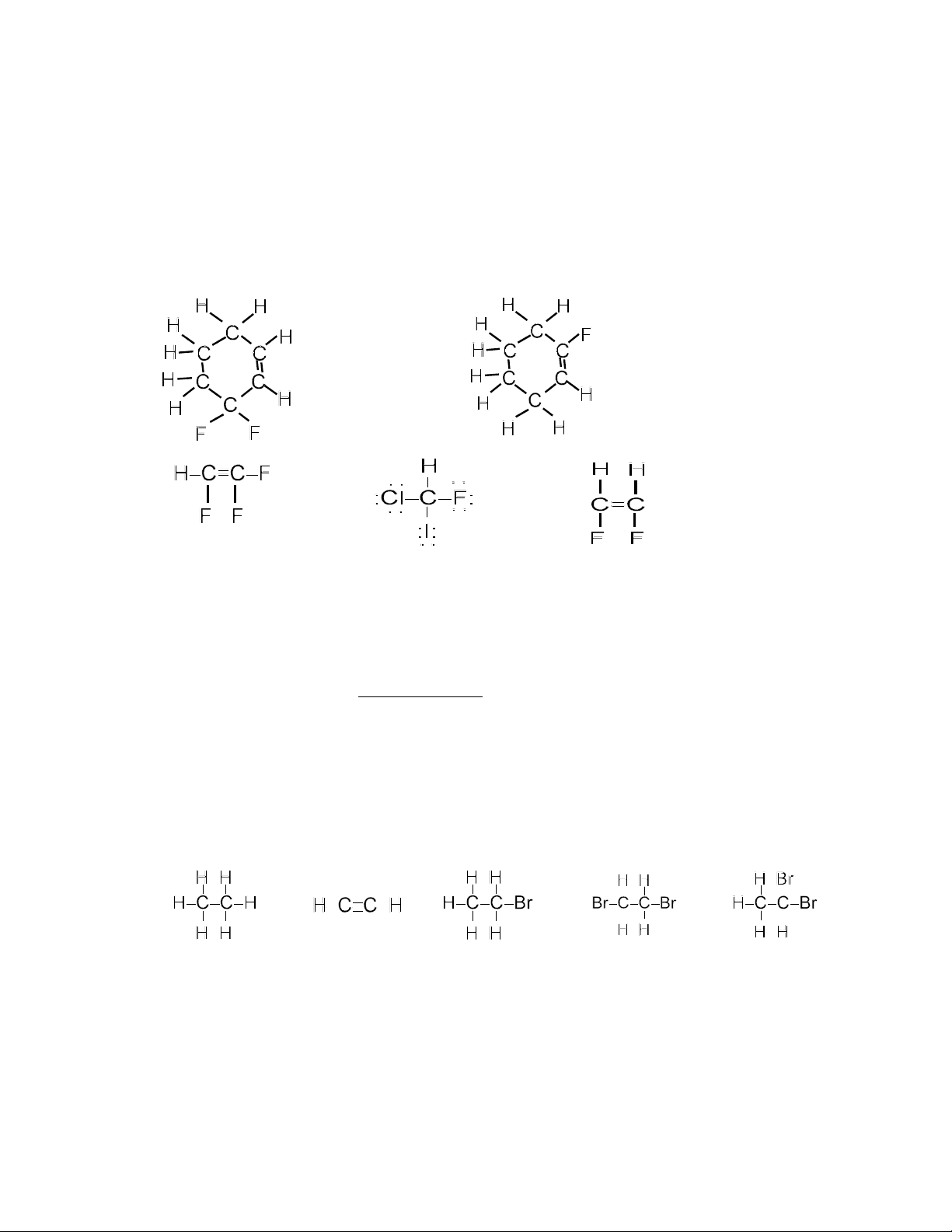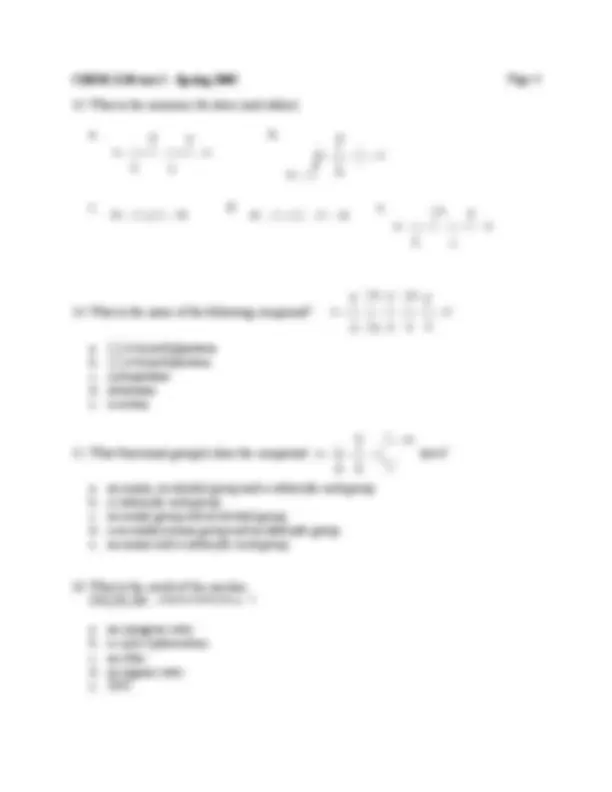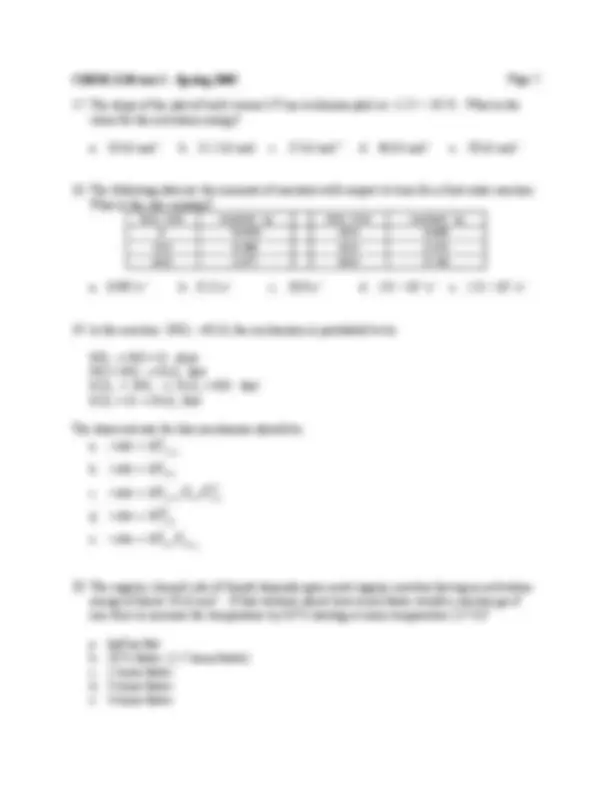





Study with the several resources on Docsity

Earn points by helping other students or get them with a premium plan


Prepare for your exams
Study with the several resources on Docsity

Earn points to download
Earn points by helping other students or get them with a premium plan
Community
Ask the community for help and clear up your study doubts
Discover the best universities in your country according to Docsity users
Free resources
Download our free guides on studying techniques, anxiety management strategies, and thesis advice from Docsity tutors
Material Type: Exam; Class: General Chemistry II; Subject: Chemistry; University: Roane State Community College; Term: Spring 2005;
Typology: Exams
1 / 7

This page cannot be seen from the preview
Don't miss anything!




Circle the correct answer on the answer sheet. R = 8.314 J mol-1^ K-1^ ln(2) = 0.
c. d. e.
a. b. c. d. e.
a. b. c. d. e.
What is the order of this reaction? a. 0 th^ b. ½ order c. 1 st^ d. 2 nd^ e. 3 rd
CM /M rate /M s-1^ CM /M rate /M s- 10 1.50 20 6. 15 3.78 25 9.
What is the order of the reaction? a. -1st^ b. 0 th^ c. 1 st^ d. 2 nd^ e. 3 rd
c. d. e.
a. 2,2,4-trimethylpentane b. 2,2,4-trimethyloctane c. cyclopentane d. isononane e. n-octane
a. an amino, an alcohol group and a carboxylic acid group b. a carboxylic acid group c. an amide group and an alcohol group d. a secondary amino group and an aldehyde group e. an amino and a carboxylic acid group
1.d 2.c 3.c 4.d 5.b 6.a 7.c 8.d 9.a 10.e 11.b 12.a 13.e 14.a 15.e 16.c 17.b 18.a 19.b 20.c